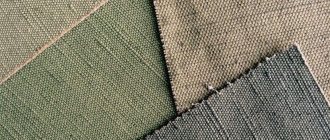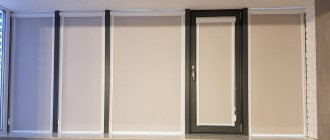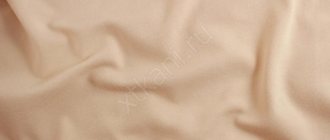Fabric of fabrics, precious, finest, pure and light - fine linen has been honored with all sorts of epithets at all times. It is mentioned more than 40 times in biblical writings alone, and many times in historical sources. Visson is a fabric for the clothes of the elect, a symbol of royalty, moral purity and righteousness. There is even a version that the legendary Golden Fleece is not sheep’s skin at all, but this material born from the sea. Scientists from different countries argue about its composition and cannot agree on this issue.
A little history
The earliest mentions of fine linen can be found in the Old Testament (the period from the 13th to the 5th centuries BC). There you can also find words about specific workshops involved in its manufacture. For example, 1 Chronicles 4:21, 22 speaks of the Jewish house of Ashbei, which was famous for this skill. According to the Holy Scriptures, clothing was made from visson for senior church officials and senior rulers.
In the Middle Ages, fine linen was produced by craftsmen in Mediterranean countries and, to a lesser extent, in India. Its ancient samples had amazing indicators: for 1 inch of fabric there were 152 warp threads and 77 weft threads; it was a high-quality, thin to translucent fabric with a high density. By the way, modern linen analogs have 88 weft threads, which is the maximum that modern industrial production is capable of.
Application area
As indicated in literary sources, the color of the canvas was white or golden. It was used for decoration of temples, clothing for high priests and pharaohs. The canvas served as the basis for dresses for women from noble families.
In ancient times, fine linen was used to make robes for kings, high priests, centurions and patricians. The mummies of pharaohs were also wrapped in linen. Whatever the color of the material, purple or white, the products look luxurious. Now analogues of fine linen are used to make dresses, curtains, shoulder capes, tablecloths and wedding dresses.
What is it made from?
As we have already mentioned, there is no consensus on what is the starting material for creating fine linen fabric, reviews of which are even in the Bible. There are two versions in total:
- Byssus (consonant with fine linen), the protein threads of the pinna nobilis mollusk, with which it is secured to the stones. Hence the second name of the fabric: sea silk.
- Linen. In English - "byssus", comes from βύσσος (ancient Greek), which, in turn, originates from the Semitic "butz", meaning "fine flax" (Syriac). In modern Greek “bussos” means linen, linen.
The following speaks in favor of the “linen” version: in the Bible, in parallel with “butz”, another term is used, “shesh”, which also means “fine flax”, but made in Egypt. That is, there is repeated reference specifically to flax.
On the other hand, according to Pliny the Elder, this material was valued on a par with gold. Only rulers had the right to wear clothes made from it: pharaohs, patricians, emperors. And Herodotus mentions - and it is confirmed by Egyptologists - that fine linen, a fabric, a photo of which can be found on our page, was also used for bandages of Egyptian mummies. From this we can conclude that we are not talking about linen, even skillfully crafted. On our website we have tips for housewives and you can read which mode to wash tulle correctly.
Compound
It is not known exactly what fine linen is made of. In ancient times, it was created from very thin linen or cotton fibers. This is confirmed by the English name - byssos. And from the Greek bussos the word is translated as linen or linen.
The matter was found in a royal burial and was later described by Egyptologist John Wilkins. He counted the threads in 1 inch of fabric. The composition contains 152 warp and 71 weft threads, which are thinner than a human hair. Thanks to the handwork of weavers of Ancient Egypt, a unique fabric was obtained.
More information about the “marine” version
The production of fabrics from the protein threads of pina nobilis actually existed. Byssus, after special processing, turns into golden brown yarn. The finest, weightless, almost transparent fabrics were woven from it and used for the production of clothing. We say “woven” because today the industrial production of this material is impossible due to the sharp decline in the population of this mollusk. At the moment we are talking only about fine linen yarn and embroidery from it. The technology for creating such yarn is known only to masters called “maestro”.
There is another argument in favor of the option with clam threads. In many cases, when we talk about fine linen, we are not talking about white material, but about golden, and “blue, purple and scarlet” (Bible, Ex. 26:1) fabric. Here we can talk about byssus yarn, in its natural color and dyed using traditional methods for that time and place.
These methods, by the way, were mentioned by Jules Verne in his work “Twenty Thousand Leagues Under the Sea”: his heroes wore clothes, the fabric for which was made, literally, “from the byssus of certain bivalve mollusks.” There are also words about coloring the material “following the example of the ancients”: with ink liquids of aplysia (purple tint) and purpurnitsa (shades of purple).
True, one point is puzzling: jackets among the clothes that go with fine linen, underwear and shirts are plausible, but not warm clothes. We can fantasize and imagine that the author has sea silk on a denser heavy Pikachu. You can learn more about the qualities of Pikachu from the article on our website.
Types and their properties
Although visson is mentioned in literature and history, it is still not known exactly how it was created. The most popular include 3 types:
- Material made from thin linen and cotton threads. It was used to sew clothes for kings, clergy, and wealthy people. On its basis, palace decoration was created. The main colors were white and golden. They said this about brides: “And it was given to her to be clothed in fine linen, clean and bright.”
- Fine linen was created from silk threads brought to India from China. All types of textiles had the same name, since in Antiquity and the Middle Ages, raw materials were important, not quality and texture. Festive clothing was made from twisted linen.
- The fibers were made from Mediterranean pinna. The bivalve mollusk was attached to the surface. On his leg there is a gland that secretes protein compounds - byssus. When they harden, strong and fine silk-like fibers appear.
The length of the handle is 6 cm, and the total number of byssuses from 1 mollusk is no more than 2 g. It turns out that for a large-sized canvas, over 1000 mollusks are required. This method was used to create the famous gloves placed in a nut shell.
Modern fine linen
Today you cannot find on sale the material that is called and is fine linen. There are only analogues, the finest linen veils and fabrics made from other raw materials, which claim to be close in quality to the original. Main similarity criteria:
- High density with minimal thickness.
- High aesthetic qualities.
- Wear resistance.
- Low elasticity. Visson - knitwear never existed.
For example, gas is an interesting material; we have already written about it and we advise you to read this article. This also includes many types of silk and synthetic “fine linen” fabrics, curtains, clothes, bedding, etc. Accordingly, we cannot give any recommendations for care: it will depend on the type of fabric chosen.
From modern materials, read about oxford fabric - the properties of which repel dirt.
Care
If we are talking about ancient fine linen, then there is no accurate information about this. Textile care depends on the type of fiber. Natural silk, which is just as elegant and wear-resistant, is often compared to fine linen. To maintain the appearance of the material, it is necessary to properly care for it:
- Washing must be done by hand in warm water. There is no need to soak things in advance. The use of bleach is prohibited.
- For washing you need soft products designed for this fabric. Neutral shampoo and baby soap are suitable.
- Silk items should not be rubbed with your hands, as it is delicate. Due to strong pressure, the canvas loses its original appearance.
- The product should be squeezed out carefully and should not be twisted.
- Dry things flat, away from heating appliances.
- It is advisable to iron silk wet, as the procedure is easier.
- Do not allow chemical products - perfumes, creams, deodorants - to come into contact with the item.
- Sweat stains and other contaminants are carefully removed with alcohol.
Visson is an ancient material that delights. Of course, now we cannot allow people to wear clothes made from such fabric. But there are other beautiful fabrics that are similar in beauty, originality and durability.
Dear readers of the Tkan.Club website, if you still have questions on this topic, we will be happy to answer them. Leave your reviews, comments, share stories if you have dealt with this fabric! Your life experience may be useful to other readers.
How much does the fabric cost?
Material made according to all canons from the byssus pina nobilis cannot be bought today, either in Russia or in any other country. As stated above, there are not even factories where this fabric is produced. So where can you find fine linen, has it really disappeared? It is believed that there is only one left in the whole world, the last keeper of the art of creating sea silk. This is seamstress CHIARA VIGO (Chiara Vigo), a resident of San Antiojo (Sardinia). Her creations do not go on sale, since according to the philosophy of the maestro, fine linen is a gift, and not a way to make a profit.
If we talk about analogues, the cost can vary greatly, depending on the quality of the material, country of production, and purpose. So, linen veils will cost from 380 to 1000 rubles, if you don’t buy luxury stores; prices for cupra fabrics start from 550 rubles, and the upper limit is 2000 rubles; natural silk will cost from 2500 rubles and, as they say, “to the skies”; Linen fabrics have a huge range, from 120 rubles to several thousand per meter. You can continue endlessly. We have a detailed article about material for underwear, we think you will like it.
This is interesting: modern manufacturers of fabrics and underwear, if they want to indicate the exclusivity of their products, use the word “fine linen” in its name or the name of a company or store.
Our site is constantly updated with interesting information. To keep track of new articles, just add it to your bookmarks! Read additionally on how to clean a silicone phone case, there are the author's tips.
Visson, reviews from the Internet
Anfisa Petrovna: “I’ve never seen fine linen live, but I once watched a film on YouTube about a woman who makes it. To be honest, I don’t understand what’s wrong with it to warrant paying that kind of money. Yes, very beautiful, especially these colors, gold, purple and violet, but nothing more. Although this may be the opinion of a person living in a time when machines are quite advanced.”
Svetlana: “Once I bought natural silk, it was called fine linen. Thin, very beautiful and delicate. I was very pleased. It was only later, when I started googling the name, it became clear that what I bought had nothing in common with real fine linen. But this analogue turned out to be not so bad, I will say, it was not for nothing that they called it that. By the way, underwear with that name came up in the search. Nothing special."
Katya: “The veils that are sold under the name “Visson” are my weakness. The finest, made of linen, a real decoration. But they are capricious in care, that is, that is. And once they gave me a silk scarf, it also said “fine linen”. I really liked it too. But expensive..."
There's even more history in the video, everyone watch it!











